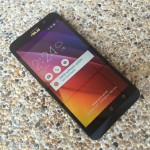
Those looking for an attractive smartphone without paying through the nose now have another option in the shape of Xiaomi’s latest flagship phone. The Mi4i is an incremental update to the Chinese company’s Mi4 in terms of hardware, which ultimately makes it a worthy upgrade.
But first, the look and feel will certainly disappoint some potential buyers. The premium feel of metal has been replaced by a plastic case in the updated model.
Its dimensions are similar to the Mi4, with a hair’s breath reduction of 1mm in terms of thickness and height but gaining 1-mm in girth.
The good news is that the screen remains the same. This is a 5-inch Full HD screen at 441 pixels per inch (PPI) resolution density that shows 95 per cent of the NTSC colour gamut, which should delight users with its colour accuracy and sharpness.

What’s different on the Mi4i screen is the hardware-driven light intensity control to combat the sun’s harsh light.
Instead of boosting the screen brightness like most phones do, Xiaomi’s Sunlight Display is able to mimic the same experience of using the phone indoors by toning down the highlights and boosting the shadow areas on the screen without using more power from the battery.
The other significant improvement made to the screen is the use of Corning’s fully-laminated glass that eliminates air gaps between the LCD panel and the touch interface. This reduces internal reflection.
These two additions to the Mi4i’s already outstanding screen makes the screen an absolute joy to use.
During quick tests at the Singapore launch this week, I could read and take photos with the phone’s screen in all situations, even in harsh sunlight with no significant loss of colour and contrast. Images displayed on the screen are both vivid and sharp too.

For the new phone, the processor is in the form of a second-generation octa-core Snapdragon 615 processor running at 1.7GHz with an Adreno 405 graphics processor. This is changed from the previous Snapdragon 801 quad-core processor.
The disappointment, however, is the use of 2GB RAM and 16GB onboard memory with no option to expand the memory storage via a microSD card slot. With more cameras that can upload photos to a phone to share on social media, 16GB memory seems a bit paltry.
For heavy users who like to hoard files on the road or are avid snap-shooters, cloud storage facilities such as Dropbox or Google Drive are the obvious solutions.

Speaking of cameras, the Mi4i now has a dual-tone LED flash light that accompanies its 13-megapixel Sony image sensor. Of note is the improved HDR mode that eliminates the halo effect usually associated with poorly taken HDR shots.
The main, back-facing camera stays at a useful 13 megapixels, which should be enough for casual snapshots. The front-facing one may have downgraded from 8 to 5 megapixels, but this may not be critical to all users unless you’re into high-res selfies.
The Mi4i’s battery life should be something to be happy about, at least on paper. The 3,120 mAh, 4.4V lithium-ion polymer battery promises to last 1.5 days without recharging. My dream of not lugging around a power bank around is starting to emerge.

Out on sale for S$279 on Xiaomi Singapore’s website on May 12, the Mi4i still offers bang for the buck.
This is especially so when used as a travel phone, since its dual 4G SIM card slots let you pop in your home and foreign SIMs and switch between the two connections easily, as Xiaomi has always done, even with its very cheap phones.






